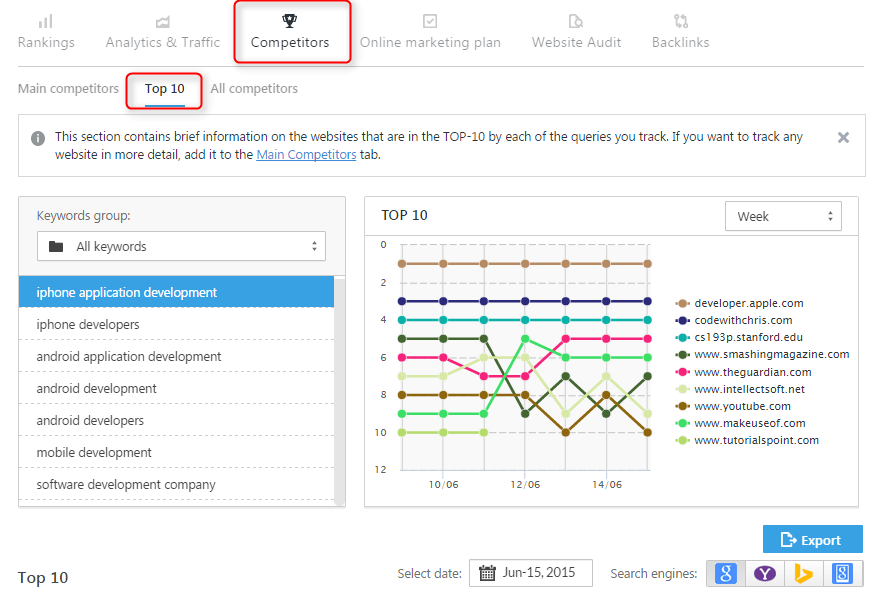Understanding SEO Competitor Ranking: Strategies For Success

In the competitive world of digital marketing, understanding SEO competitor ranking is crucial for businesses aiming to enhance their online visibility. With the right strategies, companies can identify their competitors, analyze their strengths and weaknesses, and develop effective methods to outperform them. In this comprehensive guide, we will explore various aspects of SEO competitor ranking, including its significance, how to conduct a thorough analysis, and actionable strategies to improve your own ranking.
As search engine optimization (SEO) continues to evolve, staying ahead of the competition requires not only knowledge but also the ability to adapt to changing algorithms and user behavior. By leveraging SEO competitor ranking insights, businesses can pinpoint the keywords that drive traffic to their competitors and uncover opportunities to optimize their own content.
This article will provide you with a detailed roadmap to navigate the complexities of SEO competitor ranking, ensuring that you have the tools and knowledge necessary to thrive in the digital landscape. Whether you are a small business owner, a digital marketer, or an SEO enthusiast, this guide is designed to equip you with the expertise needed to succeed.
Table of Contents
What is SEO Competitor Ranking?
SEO competitor ranking refers to the process of identifying and analyzing the ranking positions of your competitors in search engine results pages (SERPs). This analysis helps businesses understand how they compare against their competition in terms of visibility, traffic, and keyword performance. By monitoring competitor rankings, organizations can gain valuable insights into effective strategies and areas for improvement.
Importance of SEO Competitor Analysis
Conducting a thorough SEO competitor analysis is essential for several reasons:
- Identifying Strengths and Weaknesses: By analyzing your competitors, you can identify what they are doing well and where they may be lacking.
- Keyword Opportunities: Competitor analysis allows you to discover keywords that drive traffic to their websites, providing potential opportunities for your own content.
- Content Gaps: Understanding your competitors' content strategies can help you identify gaps in your own content that can be filled to attract more visitors.
- Benchmarking: Analyzing competitors helps you set realistic benchmarks for your own SEO performance.
Steps to Conduct SEO Competitor Analysis
To effectively conduct an SEO competitor analysis, follow these key steps:
1. Identify Your Competitors
Begin by identifying your main competitors in the industry. This can include direct competitors who offer similar products or services, as well as indirect competitors who target the same audience.
2. Analyze Their Websites
Once you have identified your competitors, analyze their websites for various factors, including:
- Site structure and design
- User experience and navigation
- Content quality and engagement
- On-page SEO elements (titles, meta descriptions, headers, etc.)
Several tools can assist in conducting a thorough SEO competitor analysis:
- SEMrush: This tool provides insights into competitor traffic, keywords, and backlink profiles.
- Ahrefs: A comprehensive tool for analyzing competitor backlinks, keywords, and content performance.
- SpyFu: This tool allows you to see the keywords competitors are buying and ranking for organically.
- Google Keyword Planner: Useful for identifying potential keywords based on competitor analysis.
Analyzing Competitor Keywords
Keyword analysis is a critical component of SEO competitor ranking. Here’s how to effectively analyze competitor keywords:
1. Identify Top Keywords
Use tools like SEMrush or Ahrefs to identify the top keywords that drive traffic to your competitors' websites.
2. Evaluate Keyword Difficulty
Assess the difficulty of ranking for these keywords. Focus on long-tail keywords with lower competition that you can easily target.
3. Monitor Changes Over Time
Regularly monitor keyword rankings to identify trends and shifts in competitor performance.
Content Strategy Based on Competitor Analysis
Once you have gathered insights from your competitor analysis, it’s time to develop a content strategy:
1. Fill Content Gaps
Identify topics that your competitors have not covered extensively and create high-quality content around those subjects.
2. Enhance Existing Content
Review your current content and optimize it based on insights gained from competitor analysis, including updating keywords and improving user engagement.
Monitoring Your Competitor Ranking
To stay ahead, continuously monitor your competitor rankings. Use tools to track changes in their SEO performance and adjust your strategies accordingly.
Conclusion
In conclusion, understanding SEO competitor ranking is an essential part of any effective digital marketing strategy. By conducting thorough competitor analysis, businesses can identify opportunities, enhance their content, and ultimately improve their ranking in search engine results. Remember to stay updated on your competitors' performance and adapt your strategies to maintain a competitive edge in the ever-evolving digital landscape.
If you found this article helpful, we encourage you to leave a comment below, share it with your network, or explore more articles on our site for additional insights into SEO and digital marketing strategies.
Thank you for reading, and we look forward to seeing you back on our site for more valuable content!
ncG1vNJzZmivmaC2b7XSrJirrZKWe6S7zGiYpaSknbKnrculnKean6S%2Ftn2VaKqep12YvK68xK2graeiYr%2BiusqipaBmmKm6rQ%3D%3D